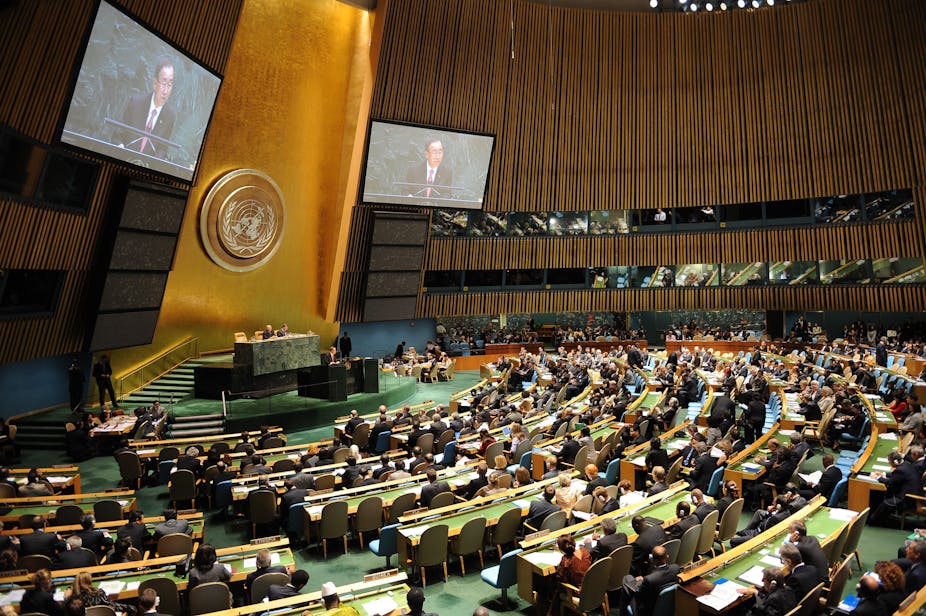Australia has done well by international comparison in addressing non-communicable diseases (NCDs) over the past fifty years and while there remains much to do, we could play a leading role in the upcoming UN meeting dedicated to NCDs by using our national experience as a beacon.
We are obviously doing something right: a recent report by the Australian Institute of Health and Welfare stated the number of people in Australia aged under 75 dying from non-communicable illnesses such as cancer, diabetes, heart disease and mental illness has dropped by almost a fifth.
So it’s very appropriate that in September, the country sends a top-ranking delegation to the United Nations (UN) General Assembly, which will devote two days to a high-level discussion about a global approach to combat these preventable illnesses.
Implications of an epidemic
Non-communicable diseases (NCDs) manifest the irritating complexity of climate change and share with global environmental problems the disturbing reality that we have created them by the way we live.
They result from what we eat, our level of physical activity, whether we smoke, and further removed, how we design our cities, our decisions about transport, our workplaces, how we process our food, and how we educate our children.
Beyond personal responsibility lies the larger, more ambiguous and even more complex matter of societal accountability: what kind of life are we leaving for our children in our fast-food filled, foot-free cities and how will this impact their health?
NCDs observe no national boundaries – they are everywhere – and kill more than 46 million people each year. The UN is considering NCDs because their effects are on both health and wealth and because global action is needed to stop them.
One-third of heart disease deaths in the developing world occur in men and women of working age, as they did in Australia in the 1960s.
Millions of such deaths occur each year in China and India, for instance, so no one interested in national productivity can ignore NCDs any longer.
Lessons from the lucky country
There are several things that a strong Australian delegation can contribute to the international debate in New York.
First, we have reduced tobacco smoking with controls on advertising, heavy tobacco taxes and changing attitudes to passive smoking.
Smoking rates are now about 17% – among the lowest in the world – and we continue with new measures such as plain packaging.
Second, deaths due to heart disease and stroke have fallen by more than half since their peak in the mid 1960s, partly due to tobacco control and dietary improvements, partly to good treatments for high blood pressure and expert care in coronary and stroke units and cardiac surgery and radiology.
We haven’t done so well with these problems in our indigenous communities and should examine why other countries have done better.
Third, by international standards Australia performs well in making the nutritional content of processed foods accessible to purchasers.
Consumers can make choices among foods by reading what is in them in the nutrition composition panels on most packs. By no means is this so everywhere in the world.
Fourth, Australian national NCD prevention programs, while they wax and wane, are far superior to what many countries have put into place.
Finally, groups such as the Heart Foundation, Diabetes Australia and the Cancer Council Australia have demonstrated the value and power of bringing civil society groups and industry together with politicians and health professional groups to promote treatment and prevention of many NCDs.
All of these agencies alongside the National Health and Medical Research Council have been both powerful advocates for and major supporters of research that has provided the insights necessary for action.
Towards a global strategy
September provides the opportunity for us to commit to doing even better. We should stand up for ourselves, our children and our neighbours – near and far – with a rousing declaration of enlightened self-interest and altruistic concern.
In this tantalising context of so near (knowledge) and yet so far (action), myriad solutions will do the rounds in New York as special interest groups propose how, if only they were funded, the problems with NCDs would melt away.
Steering a practical, health-enhancing path through the myriad piecemeal proposals will be a meaty challenge for the Australian UN delegation.
All Australians should advocate for senior political leadership and commitment to both prevention and treatment of NCDs.
Goals and targets, pitched to local resources and political possibilities, should cover the implementation of a small number of cost-effective and cheap interventions to prevent NCD.
These include the accelerated implementation of the Framework Convention on Tobacco Control; reduction in population levels of salt intake towards the recommended daily intake of less that 5 grams per person per day by working with industry; the promotion of healthy diets and physical activity and; the reduction of harmful consumption of alcohol.
What can’t be prevented should be treated.
What’s more, through our aid programs, we may well be able to encourage and assist some African and neighbouring Pacific nations to implement strategies that could save thousands of lives.
Much that has been done already provides solid foundations for scaling up the effort in future.
Australia is a world leader in public health advocacy and medical research. If we are silent now, we risk losing more than the precious lives that fall prey to NCD each day – we risk losing our standing as a global leader and the capacity to be heard on other matters of importance.
Ten years after 9/11, it would be good if New York were to see an international commitment from the world’s political leaders to prevent another disaster.

